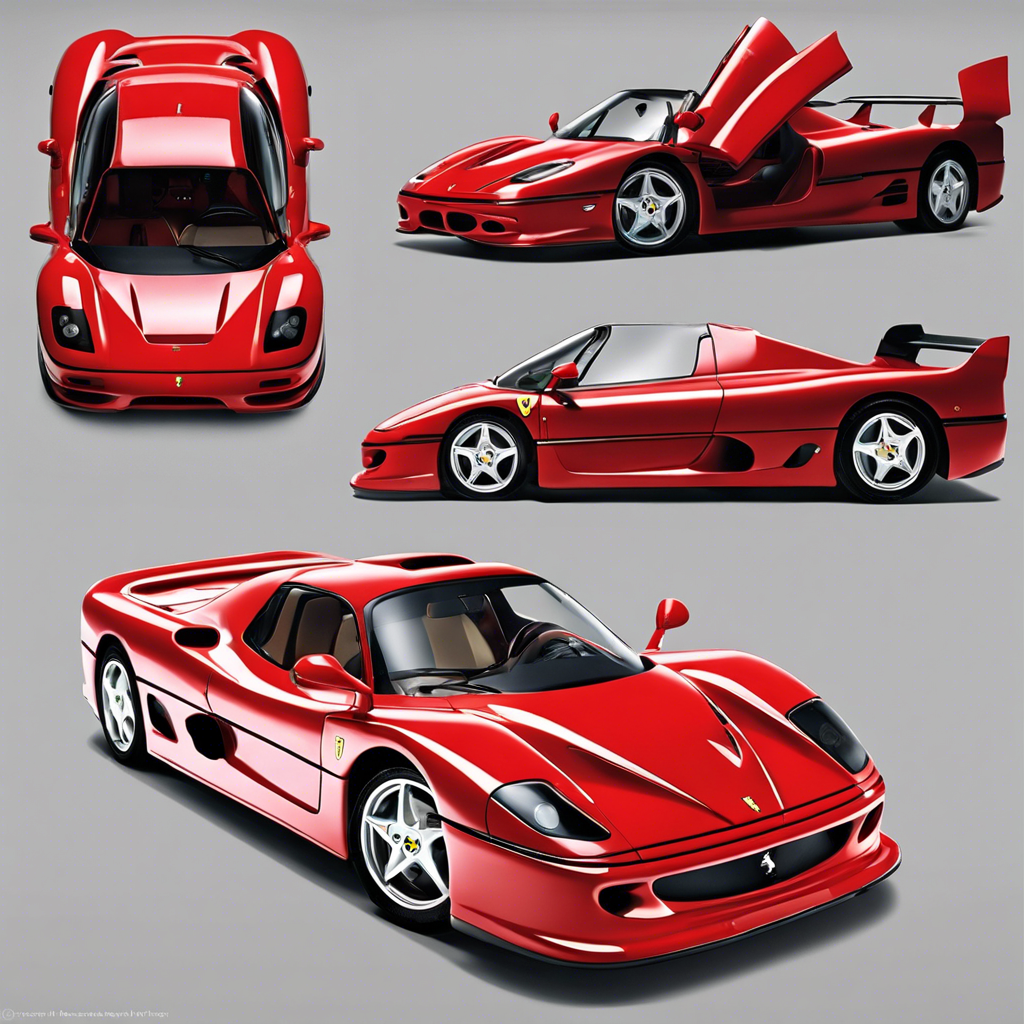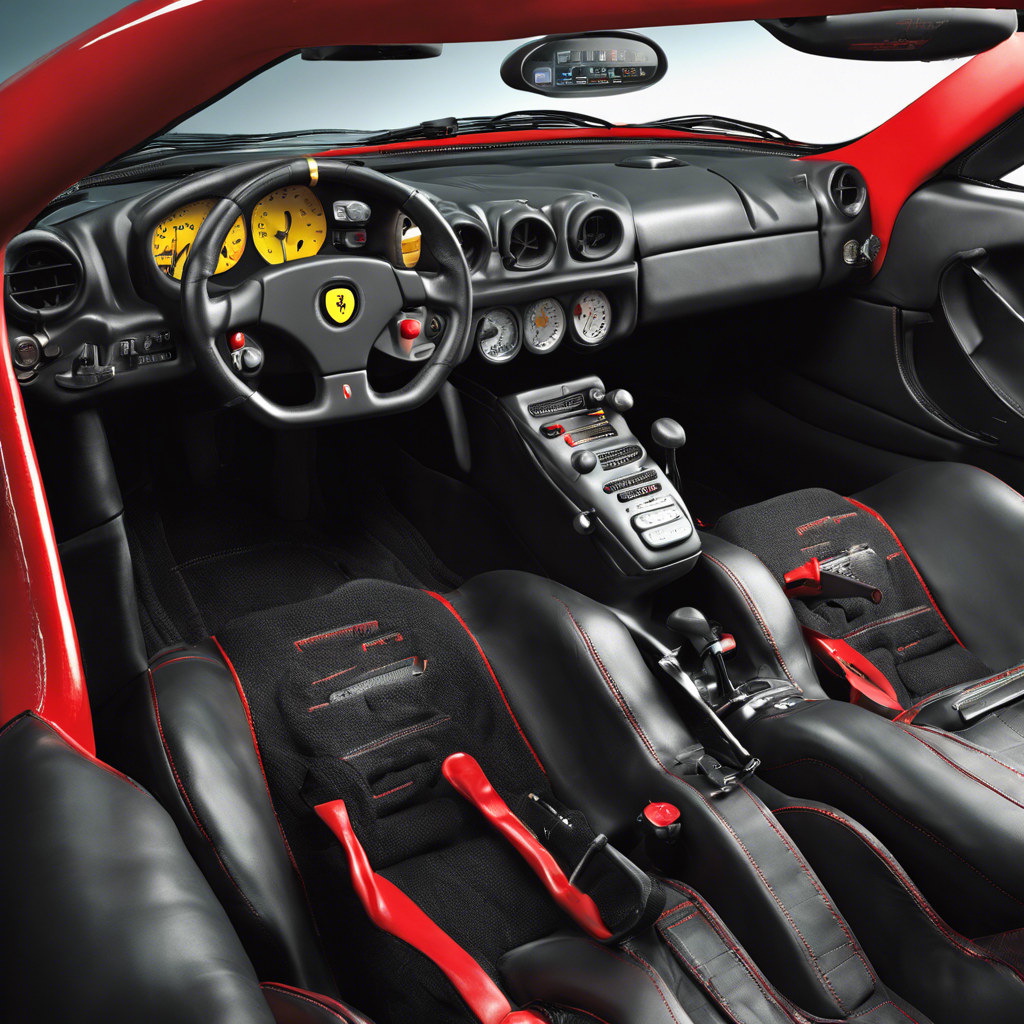The Ferrari F50: A Legacy of Performance and Innovation
October 7, 2024

The automotive world is replete with examples of engineering marvels and design icons, but few vehicles can boast the same level of reverence as the Ferrari F50. Launched in 1995, the F50 is often hailed as one of the pinnacles of automotive achievement, blending the exhilarating performance of a racetrack-ready machine with the refinement demanded by a luxury sportscar. In this piece, we will delve into the history, design, performance, and cultural significance of the Ferrari F50, providing a comprehensive overview of this unique automotive masterpiece.
A Glimpse into History

The Ferrari F50 was conceived as a tribute to Ferrari’s 50th anniversary, a celebration not just of the company’s storied past but also of its relentless commitment to innovation and excellence. The development of the F50 began in the early 1990s, driven by the desire to create a supercar that would rival its predecessor, the legendary Ferrari F40. While the F40 was noted for its raw performance and racing heritage, the F50 aimed to integrate cutting-edge technology and an unparalleled driving experience.
The car was designed by the renowned studio Pininfarina, which has been the design house for many of Ferrari’s most iconic vehicles. The design process aimed to produce an aerodynamic shape that not only looked stunning but also contributed to performance. Thus, the F50 features a low-slung silhouette with aggressive lines, complemented by its signature rear wing and a distinctive nose that reflects the lineage of Ferrari road-going race cars.
Engineering Marvel: The Heart of the F50
At the core of the Ferrari F50 is a naturally aspirated 4.7-liter V12 engine, derived from the same power unit used in Ferrari’s Formula One racing cars. This engine produces around 520 horsepower and 487 Nm of torque, allowing the F50 to accelerate from 0 to 60 mph in just 3.7 seconds. The engine is mated to a sophisticated six-speed manual gearbox, offering drivers an engaging and tactile experience that harks back to the purer driving dynamics of earlier supercars.
The F50’s chassis is another highlight of its engineering prowess. Constructed from carbon-fiber and aluminum, it is lighter and more rigid than its predecessors, a feature that enhances both handling and safety. With a weight of approximately 1,400 kilograms (or about 3,086 pounds), this supercar achieves a remarkable power-to-weight ratio that translates directly into high-performance capabilities.
Ferrari also embraced advanced aerodynamics with the F50. The car features active aerodynamics, with a rear wing that adjusts to different driving conditions, ensuring optimal downforce at high speeds. The design choices contribute significantly to stability and handling, allowing drivers to navigate corners with confidence and precision—a hallmark of the Ferrari driving experience.
Interior Luxury and Features

While the F50 is undeniably a performance car at heart, Ferrari ensured that the interior also provided a level of comfort and luxury befitting its status. The cockpit is designed to immerse the driver in the experience, with a minimalist approach that emphasizes functionality and the connection between driver and machine. The instrumentation is clear and focused on delivering essential information with ease, while the materials used in the construction, from leather to carbon fiber, reflect Ferrari’s commitment to luxury.
The F50 features racing seats that provide excellent support during high-speed driving, while a decent audio system and climate control ensure a comfortable ride when cruising. However, it is worth mentioning that the focus remains heavily on driving performance, meaning that the F50 lacks some of the modern conveniences found in today’s high-end sports cars.
Cultural Significance and Legacy
The Ferrari F50 has cemented its place in automotive history not only as a powerful machine but also as a symbol of the pinnacle of 1990s supercar engineering. The F50 was built in limited numbers, with only 349 units produced, making it a sought-after collector’s item today. Its rarity, combined with its distinct features and performance, has ensured that it commands high prices in the secondary market, often fetching millions at auctions.
Beyond its desirability as a collectible, the Ferrari F50 has also made numerous appearances in popular culture. It has been featured in various films, video games, and television shows, thereby embedding itself deeper into the fabric of car enthusiast culture. Enthusiasts and collectors alike cherish the F50 for its role in ushering in the modern era of supercars, paving the way for successors like the Ferrari Enzo and LaFerrari.
Conclusion
The Ferrari F50 stands as a monumental achievement in the automotive world, embodying the marriage of racing heritage, cutting-edge technology, and luxury. As we look back at its legacy, we recognize that the F50 was not merely an exercise in engineering but a passionate endeavor that showcased Ferrari’s dedication to pushing the envelope of performance and design.
Though over two decades have passed since its launch, the Ferrari F50 retains its allure and status as an automotive icon, continuing to inspire new generations of car lovers and adhering to the ethos of Ferrari: to push the boundaries of what is possible behind the wheel. For those fortunate enough to experience it, the F50 is more than just a car; it is a visceral encounter with the spirit of racing and the pinnacle of automotive excellence.